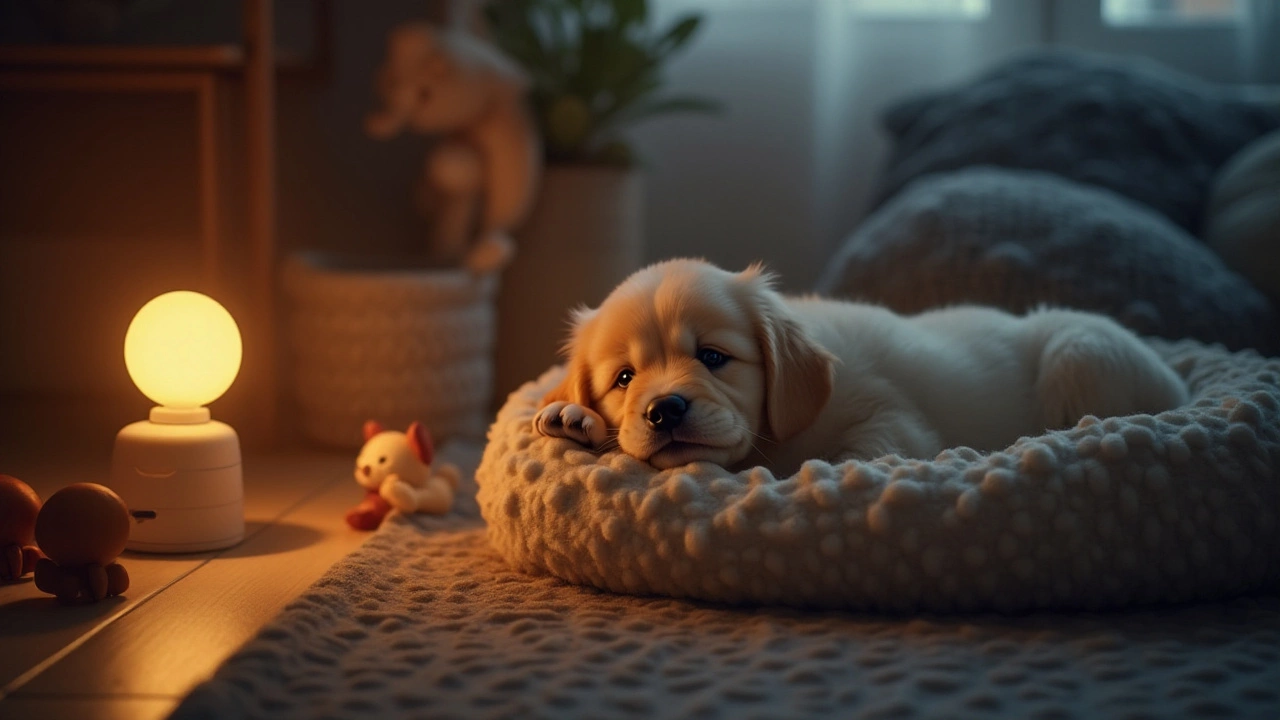Darkness for Puppies: Light or No Light at Night?
When you bring a new pup home, the bedtime routine can feel like a puzzle. One common question is whether to leave a light on or plunge the room into darkness. The answer isn’t one‑size‑fits‑all, but you can figure it out by watching your puppy’s cues and using a few easy tricks.
Why Darkness Can Be Good for Puppies
Puppies are born ready to sleep a lot—up to 18 hours a day. In a dark, quiet space they can settle naturally, just like a human baby. Darkness tells their bodies it’s time to release melatonin, the hormone that helps them drift off. If the room is too bright, the pups may stay alert, twitch, or whine because their brain thinks it’s still playtime.
Another perk is safety. A dark room reduces visual distractions, so the puppy is less likely to bolt around, knock over toys, or get tangled in cords. It also helps the owner keep a consistent sleep schedule, which in turn trains the puppy to expect a regular bedtime.
When a Night Light Might Help
Some pups get nervous when the lights go out, especially if they’re new to your home or have been separated from their littermates. A low‑level night light can give them a gentle visual cue that they’re still in a safe space. Choose a soft amber or warm white light; harsh blue tones can actually keep them awake.
Use the light sparingly. Place it behind a furniture piece so the glow is indirect, and keep the brightness below 50 lux. Too much light defeats the purpose of melatonin production, and a bright bulb can encourage the puppy to explore when you’d rather they stay in their crate.
If you notice your pup whimpering or pawing at the crate door the moment the lights go off, try a night light for a few nights. Gradually dim it over a week until the puppy no longer reacts. Most pups adjust quickly once they realize the dark isn’t a threat.
Practical Tips for a Calm Night
1. Set a bedtime routine. A short walk, a sip of water, and a calm cuddle signal that sleep is coming. Consistency beats any lighting trick.
2. Make the crate cozy. Add a blanket that smells like you, a chew toy, and a low‑profile pad. Comfort reduces the urge to demand light.
3. Limit noises. A ticking clock or a white‑noise app can mask sudden sounds that would otherwise startle a puppy in the dark.
4. Check temperature. Puppies can get chilly, and shivering can be mistaken for anxiety. Keep the room at a comfortable 68‑72°F.
5. Monitor for signs of stress. If the pup whines for more than a few minutes, gets panting, or seems restless, a brief check‑in (no bright light) can reassure them without resetting the sleep cue.
Remember, every puppy is different. Some will love total darkness from day one, while others need a dim glow for a short period. By watching their behavior and making small adjustments, you’ll find the sweet spot that lets both you and your pup rest easy.
Posted By Bryndle Redding On 2 Jan 2025 Comments (0)
Do Puppies Need Darkness to Sleep? A Pet Owner's Guide
Understanding whether puppies should sleep in the dark is essential for new pet owners. Puppies have unique sleep requirements, and the presence or absence of light can impact their sleep quality. This guide explores how light affects puppy sleep, tips for creating an ideal sleep environment, and debunks common myths surrounding puppy sleep habits. The right approach ensures your puppy gets the restful sleep it needs for healthy development.
READ MORE